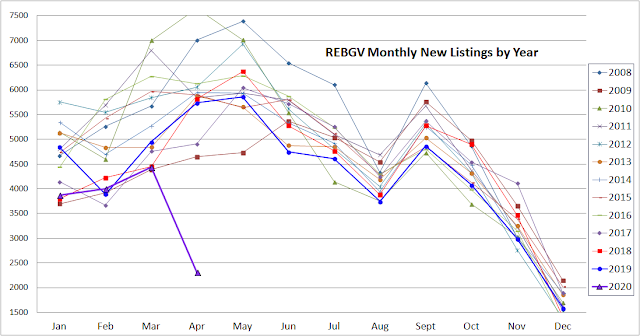August sales will be right along the same line as July in the ballpark of 3,000 sales. As August had 2 less business days than July, sales will look slightly less in August but the average daily sales have been actually higher in August. So far, average sales per day in August is 151 sales per day whereas average sales per day in July is 142 sales per day. September brings another intriguing month. There have been record breaking new listings in August and we anticipate to see some of those translate into sales in September. Don't be surprised to see another 2,800 to 3,200 sales month in September for 3 consecutive months.

Months of Inventory (inverse of SAL ratio) is remaining in the seller's market territory for August due to high sales. One should expect high sales and high new listings again for September with both numbers being well over 10-year averages. Both numbers being high should cancel each other's effect Months of Inventory keeping it level. One should expect similar findings in September where Months of Inventory should remain between 4.2 to 5.0.
MOI under 5 = Seller's Market
MOI 5 to 7.5 = Balanced Market
MOI over 7.5 = Buyer's Market
Typical spring season TI increase was halted by Covid-19 pandemic this year. One should remember that high transactions lead to TI increase and low transactions lead to TI decrease. This is why we always see TI increase during spring and TI decrease during winter.
High sales/High New Listings during Spring = TI generally increases
Low sales/Low New Listings during Winter = TI generally decreases
Therefore, it is absolutely not a surprise at all that we are seeing TI increase right now as both sales and new listings are high. What is more important is what kind of impact this volume will have on the SAL ratio. And currently, SAL ratio continues to remain in the seller's territory.
There were roughly 6,000 new listings that were compromised during the spring season due to Covid-19 pandemic (1,000 in March, 3,000 in April and 2,000 in May). We have now gotten back about 3,000 of them back on the market since June (500 in June, 1,000 in July and 1,500 in August). There remains another 3,000 to return to the market assuming that all of them are returning to the market. Of course, there is no guarantee that all of them will be back but that may be balanced out by listings that will come on the market as a result of difficulties caused by Covid-19.
There is little doubt that New Listings will be high in September. We may see new listings like we've never seen before. Out of 3,000 listings that has yet to return to the market, we could see 1,500 to 2,000 of them return in September in addition to typical 10-year-average for September. This means that we could see New Listings as high as 6,500 to 7,000. This will certainly have a positive impact on Total Inventory but the degree of TI increase will depend on how high sales will be in September.
September Predictions:
Sales: 2,700 to 3,100
New Listings: 6,500 to 7,000
Expirations: 2,200 to 2,500
Total Inventory Change: +1,200 to +1,800


















































